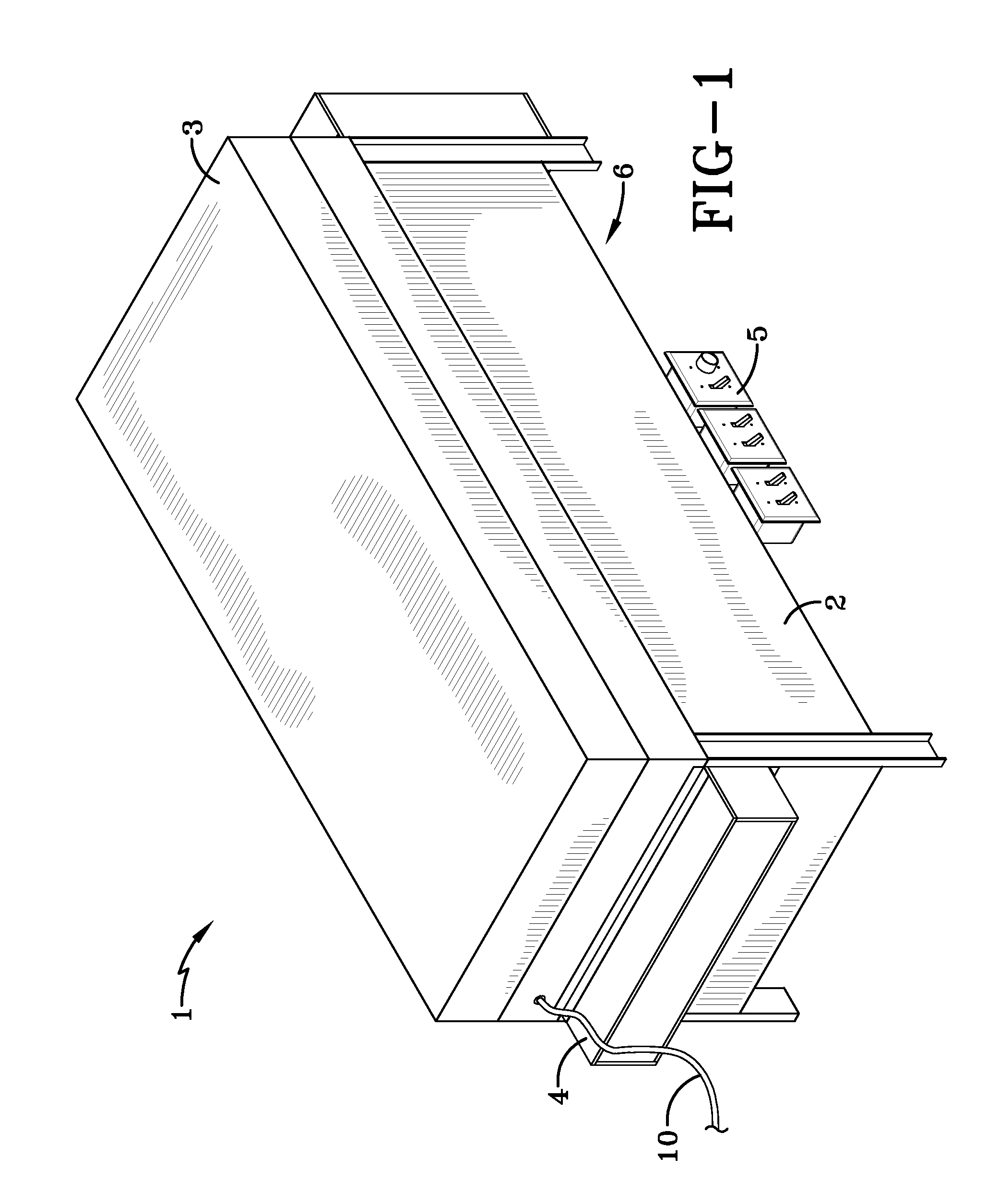Process and reactor for synthesis of ultra-high molecular weight acrylic polymers
a technology of acrylic polymer and reactor, which is applied in the field of process and reactor for synthesis of ultra-high molecular weight acrylic polymers, can solve the problems of difficult or impossible to polymerize certain monomers, difficult or impossible to achieve desired molecular weight, and difficult to control the ultimate molecular weight of the polymer, etc., to achieve the effect of improving mechanical, thermal, optical and processing parameters
- Summary
- Abstract
- Description
- Claims
- Application Information
AI Technical Summary
Benefits of technology
Problems solved by technology
Method used
Image
Examples
example 1
[0030]In this experiment ultra high molecular weight polymethylmethacrylate (UHMW PMMA) was synthesized utilizing the multi-step technique of this invention. In the first step of the procedure 40.00 grams of methylmethacrylate (MMA) monomer (99.51%) was added to a one neck transparent Pyrex® bottle having a capacity of 1000 ml. This was followed by the addition of 0.20 g of 0.49% 2-Hydroxy-2-methylpropiophenone (UV-2). Polymerization initiated under low UV-intensity with cooling bring provided by circulation cool air over the flask to control heat during the polymerization. A peak in the exothermic reaction was observed after 79 minutes of polymerization time. However, the polymerization temperature was adequately controlled and did not exceed 28° C. during this phase of the process.
[0031]In the second step of the procedure used the polymer obtained from the first step was dissolved in additional MMA monomer which acted as a reactive diluent. Such a system where the polymer obtained...
example 2
[0036]In this experiment UHMW heptafluorobutyl acrylate (HFA) was synthesized utilizing the multi-step technique of this invention. The general procedure used was the same as the one utilized in Example 1. However, in the first step of the procedure used 20.45 g (99.51%) of monomer and 0.10 g (0.49%) UV-2 was added to the flask. In this experiment the polymerization temperature did not increase during the course of the reaction conducted in the first step (an exothermic reaction was not observed).
[0037]In the second step of the procedure 19.62 g of base polymer was dissolved in 78.49 g of monomer with the UV-2 concentration being 0.1019%. Polymerization temperature peaks were controlled by turning the cooling fan on and off during the course of this polymerization step. A small temperature peak at 32.86° C. was observed after 6 minutes of UV exposure at which point the UV exposure was terminated. After the temperature fell to room temperature, UV exposure was again initiated. After ...
example 3
[0040]In this experiment UHMw MMA was polymerized with heptafluorobutyl acrylate to form a PMMA-co-HFA copolymer utilizing the multi-step technique of this invention. The general procedure use was the same as the one utilized in Example 1. However, in the procedure used the copolymer of heptafluorobutyl acyrlate / MMA at a 50 / 50 mole percent concentration was performed using similar protocols. In the procedure used 14.40 grams of HFA monomer (71.46%) and 5.65 g of MMA monomer (28.04%) was added to a Pyrex reactor bottle with 0.10 g (0.50%) UV-2. The monomer solution was exposed to UV for 129 minutes with no flow being apparent and no overall increase of temperature being observed.
[0041]In the second step of the procedure used 18.94 g of the base polymer made in the first step was dissolved with 54.36 g of 254 monomer (71.73%) and 21.42 g of MMA monomer (28.27%). A total weight of 75.78 g of monomers was used to dissolve 18.94 grams of BP and polymerized as previously described. A firs...
PUM
| Property | Measurement | Unit |
|---|---|---|
| temperature | aaaaa | aaaaa |
| temperatures | aaaaa | aaaaa |
| temperature | aaaaa | aaaaa |
Abstract
Description
Claims
Application Information
 Login to View More
Login to View More - R&D
- Intellectual Property
- Life Sciences
- Materials
- Tech Scout
- Unparalleled Data Quality
- Higher Quality Content
- 60% Fewer Hallucinations
Browse by: Latest US Patents, China's latest patents, Technical Efficacy Thesaurus, Application Domain, Technology Topic, Popular Technical Reports.
© 2025 PatSnap. All rights reserved.Legal|Privacy policy|Modern Slavery Act Transparency Statement|Sitemap|About US| Contact US: help@patsnap.com



